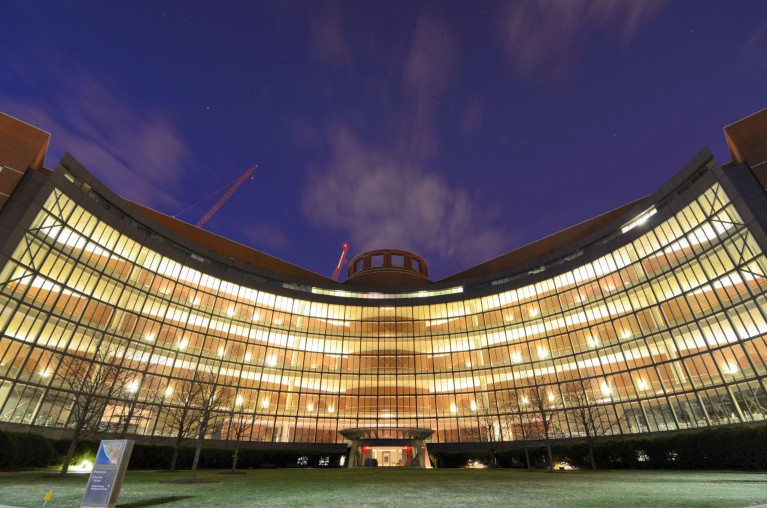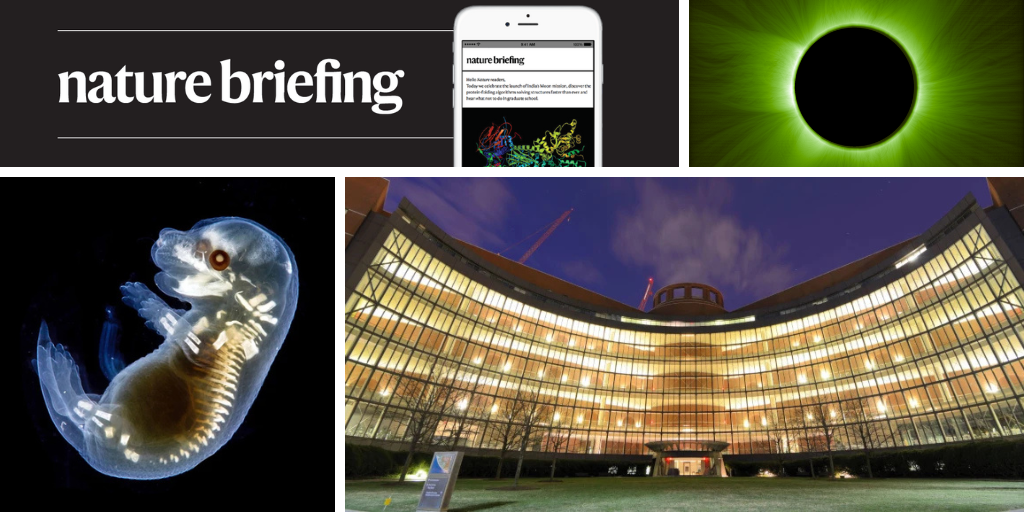You have full access to this article via your institution.
Hello Nature readers, would you like to get this Briefing in your inbox free every day? Sign up here.

On 16 June at the US District Court for the District of Massachusetts in Boston, a judge ruled that the Trump administration’s slashing of some research grants is illegal.Credit: Sean Pavone/Alamy
A US judge has ruled that the US National Institutes of Health (NIH) must restore funding to hundreds of research projects that were cancelled because they touched on diversity, equity and inclusion (DEI), sexual and gender minorities (LGBT+) and COVID-19. The order covers only the scientists named in the lawsuits and in the 16 states that sued the government — about one-third of 2,400 projects that have been cut at the NIH. The judge took time after the ruling to make clear his opinion on what drove the cuts. “This represents racial discrimination and discrimination against America’s LGBTQ community,” said Judge William Young, who was appointed by former Republican president Ronald Reagan. “I would be blind not to call it out.”
By injecting human cells into the amniotic fluid of pregnant mice, researchers have grown mice with a sprinkling of human cells in their intestines, liver and brain. “It’s a crazy experiment,” says biomedical engineer Xiling Shen. The injection “didn’t even break the embryonic wall”, he added. The simple technique could be “game changing” for the field, says stem-cell biologist Hideki Masaki. But researchers say that, for the technique to be useful, more work needs to be done to increase the proportion of human cells that grow in the organs.
Scientists are among those people who have been killed and harmed in the escalating conflict between Israel and Iran. On 13 June, Israeli strikes targeting Iran’s nuclear-weapon capabilities killed several nuclear scientists. Retaliatory attacks launched by Iran reportedly caused substantial damage to the prestigious Weizmann Institute in Israel, which is considered by Iran to be a military target. For Iranians, the effects are compounded by years of sanctions and lack of freedoms within their country.
Industrial waste is turning into solid rock in as little as 35 years. Researchers analysed a cliff made up of millions of cubic metres of slag produced by now-defunct iron and steel foundries along a stretch of the English coast. A coin from 1934 and an aluminium can tab manufactured after 1989 were embedded in the material, showing that it had lithified — essentially turning into rock — within that period. “All the activity we’re undertaking at the Earth’s surface will eventually end up in the geological record as rock, but this process is happening with remarkable, unprecedented speed,” said study co-author John MacDonald.
Features & opinion
When it comes to protein motion, it’s not a case of ‘blink and you’ll miss it’ — it’s ‘blink and you’ll miss it a few hundred times’. Working on that timescale has long stymied biologists, but the rapid evolution of time-resolved cryo-electron microscopy (TR cryo-EM) over the past several years has made it possible to reconstruct dynamic processes with near-atomic detail. But the technique is niche: TR cryo-EM requires considerable expertise and specialized equipment, and researchers are still working out how to interpret the resulting data. “Nature is under no obligation to be simple,” cautions biochemist Radoslav Enchev.
Mindfulness has been shown to have positive impacts, but has also been criticized as a one-size-fits-all approach to complex issues. Part of the problem might stem from how a web of interwoven Buddhist practices was simplified for a secular Western audience, argues complexity scientist Pavel Chvykov. He outlines how his field — which focuses on the emergent properties of systems with many interconnected parts — can help to recover the lost depths of this modern technique.
Image of the week

In a feat of precision flying, the European Space Agency’s Proba-3 mission has created the first examples of an artificial solar eclipse. The operation requires the mission’s two spacecraft to fly 150 metres apart in perfect alignment for several hours, with one casting a shadow on the other’s optical equipment to create the effect seen here. Proba-3 can create these ‘eclipses’ much more regularly than natural ones would occur. This gives scientists an opportunity to study the Sun’s outermost layer, the corona, which is usually blocked from view by the star’s light. (Associated Press | 5 min read) (ESA/Proba-3/ASPIICS/WOW algorithm)
Today I’m amazed that Finland’s only endemic species (and one of its cutest) has been around even longer than the lake that gave it its name. Saimaa ringed seals (Pusa hispida saimensis) have been living landlocked in Lake Saimaa since the glaciers retreated around 10,000 years ago. Now a genetic analysis suggests that they diverged from other seal species at least 50,000 years before that.
While I look forward to being landlocked in my paddling pool later today (yes, we’re having a heat wave), why not send me your feedback on this newsletter? Your e-mails are always welcome at [email protected].
Thanks for reading,
Flora Graham, senior editor, Nature Briefing
With contributions by Jacob Smith
• Nature Briefing: Careers — insights, advice and award-winning journalism to help you optimize your working life
• Nature Briefing: Microbiology — the most abundant living entities on our planet — microorganisms — and the role they play in health, the environment and food systems
• Nature Briefing: Anthropocene — climate change, biodiversity, sustainability and geoengineering
• Nature Briefing: AI & Robotics — 100% written by humans, of course
• Nature Briefing: Cancer — a weekly newsletter written with cancer researchers in mind
• Nature Briefing: Translational Research — covers biotechnology, drug discovery and pharma


